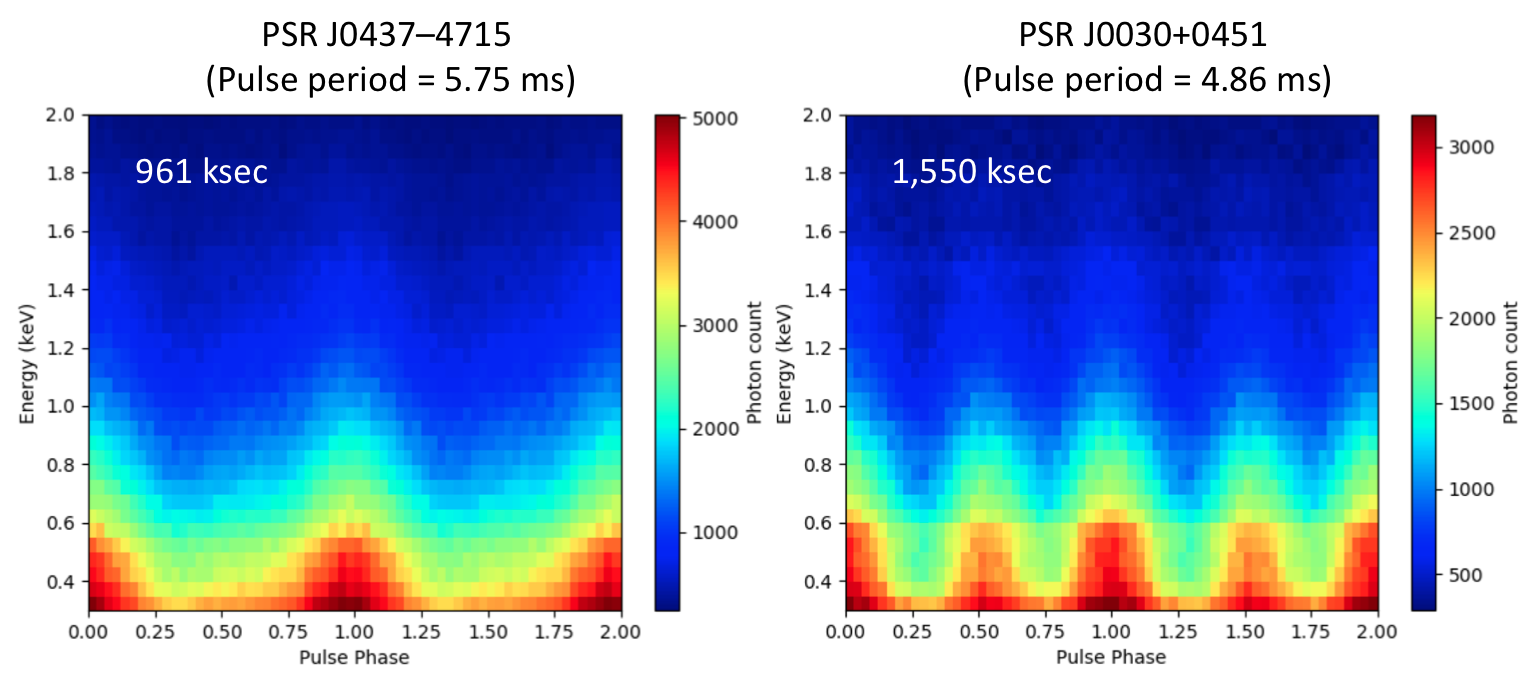NICER / ISS Science Nugget for August 3, 2018Pulsar X-ray light curves give insight to key NICER science goalNeutron stars are the densest material objects known, consisting largely of an extreme, mysterious state of matter that can't be produced in any laboratory. NICER's principal scientific objective is to probe the physics of this dense matter by accurately measuring the radii and masses of a handful of specific neutron stars: those that are seen as pulsars with millisecond periods. Glowing "X-ray hot" from their magnetic poles and rotating hundreds of times each second, these stars sweep their beams of radiation across NICER's sensitive X-ray Timing Instrument, which registers the detection times and energies of individual X-ray photons. Thanks to accurate time-stamping via a GPS receiver and fast detector electronics, these photons are accumulated over a million seconds (or more) of total exposure time for each object, across the mission's operational lifetime. Given the known spin rates of the pulsars, each photon is "folded" to its unique phase in the star's rotation, and the result – a phase-energy photon "map" (see figure below) – provides the most sensitive description to date of a pulsar hot-spot's variations in time and energy as seen by a distant observer as the star rotates.
These maps represent the key datasets that enable NICER's science goal. Because neutron stars are strongly gravitating objects, X-rays from the surface hot-spots are gravitationally lensed – the light paths bend around the star's horizon so that emission from the far side becomes visible to a distant observer. The degree to which this occurs depends sensitively on the star's mass and radius, and it is encoded in the photon-energy maps, or spectrally-resolved "lightcurves," of each pulsar. For the two (of four) target pulsars shown here, NICER has accumulated its planned total exposure, with the remaining two on track for completion by the end of the calendar year. NICER
|



